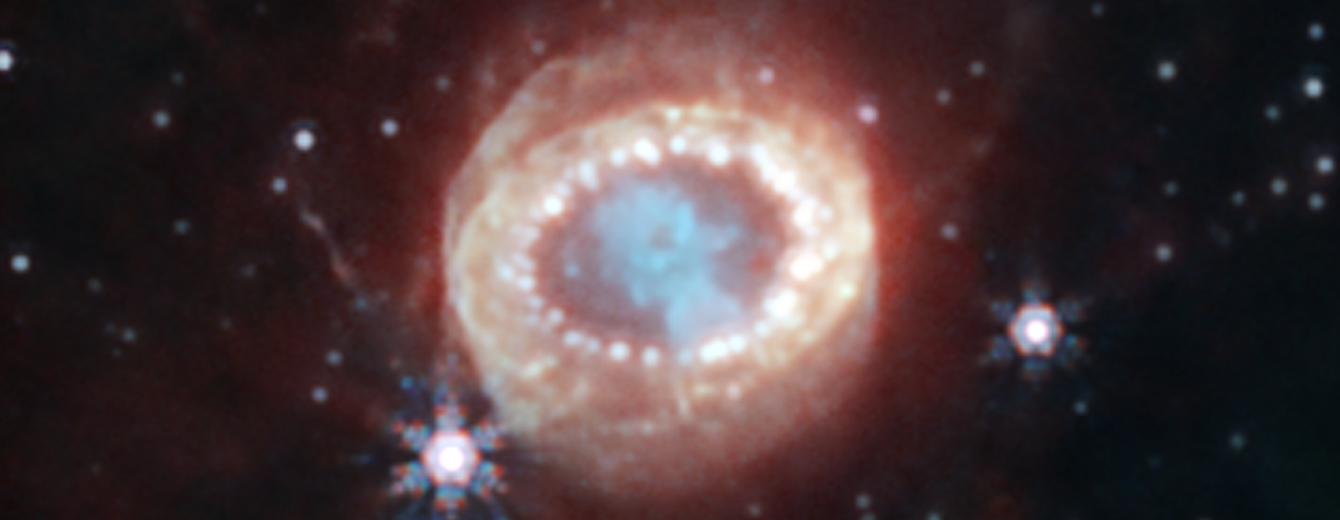NASA’s James Webb Space Telescope recently began examining the remains of one of the most famous supernovas, SN 1987A. The supernova remnant in the Large Magellanic Cloud, 168,000 light-years away, has been studied at many wavelengths from gamma rays to the radio band in the nearly 40 years since its discovery in February 1987.
New images from the James Webb Space Telescope’s NIRCam instrument provide an important addition to our understanding of supernova evolution and supernova remnant formation.
In the image, we see a keyhole-shaped central feature filled with clumps of gas and dust ejected during the supernova explosion. The dust is so dense that even the near-infrared rays detected by Webb cannot pass through it, creating the dark “hole” in the center.
Around the keyhole we see a shiny tropical ring, which seems to connect the outer rings to form an hourglass. The equatorial ring consists of material that was ejected tens of thousands of years before the supernova explosion. The bright spots that were seen when the shock wave of the explosion occurred appeared I got to the ring. And now there are areas beyond it, surrounded by a spreading emission zone. In these places, the supernova’s shock wave reached the outer matter.
These phenomena have been accurately observed It has been checked With NASA’s Hubble and Spitzer Space Telescopes and the Chandra X-ray Observatory. However, the unparalleled sensitivity and resolution of the Webb Space Telescope discovered something else in the supernova remnants: tiny crescent-like shapes. Researchers believe that these belong to the outer layers of gas released during the explosion. Their brightness is likely due to an optical phenomenon, where matter expands in three dimensions. From our perspective, the crescents appear to contain more matter than actually exists.
It is also worth noting the high resolution of the image. Before the Webb Space Telescope, the defunct Spitzer Space Telescope observed the supernova in the infrared and collected basic data on changes in the remnant’s emission throughout its life. However, he had never been able to observe the orb in such detail.
Although they were recorded decades ago, supernova remnants still raise many questions, especially about the neutron star that must have formed after the explosion. Like Spitzer, Webb will continue to monitor the celestial body. The space telescope’s NIRSpec (near-infrared spectrometer) and MIRI (middle-infrared instrument) instruments allow astronomers to obtain new, high-resolution infrared data about the newly discovered forms. Webb will soon work with the Hubble Space Telescope, Chandra X-ray Observatory and other observatories to collect new data to better understand the past and future of the legendary supernova.
source: Webb Space Telescope
comment















_(1).jpg)


























